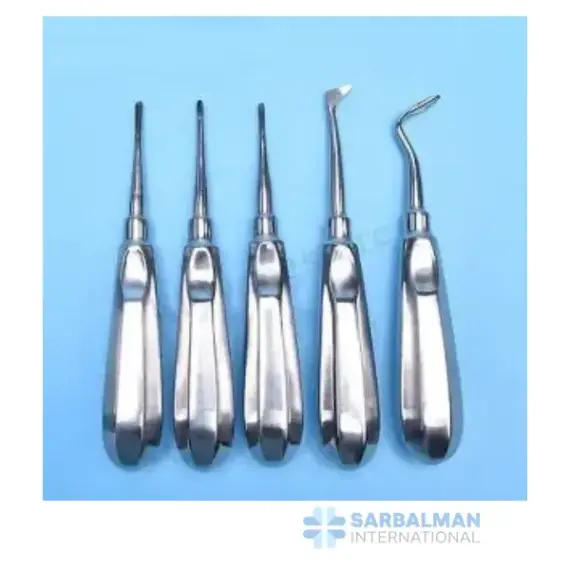Root Tip Elevators
Free!
Root Tip Elevators are fine, angled dental instruments for removing tiny root tips and fractured fragments during extractions. The tapered, sharp ends and sturdy handles provide controlled leverage in tight posterior and furcation areas. They help preserve bone, reduce trauma, and speed procedures when forceps cannot grip a fragment. A practical choice for general dentists and oral surgeons who want clean, efficient, and atraumatic extractions.
Description
Root Tip Elevators are precision dental instruments used to remove small root tips and fractured apical fragments during extractions and oral surgery. Their slim, sharp working ends slip into tight spaces between dentin and alveolar bone. The angled shanks give access to posterior teeth and furcations. In skilled hands, they lift or tease fragments out without excessive bone removal, helping preserve the socket for faster healing and easier grafting or implant planning.
Key features and benefits:
-
Fine, tapered tips for secure purchase on tiny fragments.
-
Straight, right, and left angulations to reach anterior and posterior sites.
-
Strong, ergonomic handles that transmit controlled torque.
-
Surgical stainless steel construction. Autoclavable for routine sterilization.
-
Smooth or lightly serrated edges for grip while minimizing trauma.
Typical uses:
-
Retrieval of broken root tips after routine extraction.
-
Elevation of retained roots in multirooted teeth.
-
Support during sectioned molar extractions.
-
Apical fragment removal in endodontic retreatment or apicoectomy.
How they compare:
-
Versus standard elevators: root tip elevators are finer and designed for delicate, targeted leverage rather than bulk luxation.
-
Versus periotomes or luxators: periotomes cut periodontal ligament; root tip elevators engage hard tissue to lift fragments.
-
Versus rongeurs or burs: elevators can remove fragments without additional bone removal, reducing trauma and chair time.
Quality guidance:
-
Instruments are typically crafted from corrosion resistant steel suitable for common sterilization cycles.
-
Choose matched angulations to cover both sides of the arch and improve line of access.
Clinical significance:
-
By preserving bone and soft tissue, these instruments support atraumatic technique and better postoperative comfort, which patients appreciate and clinicians rely on for predictable outcomes.




